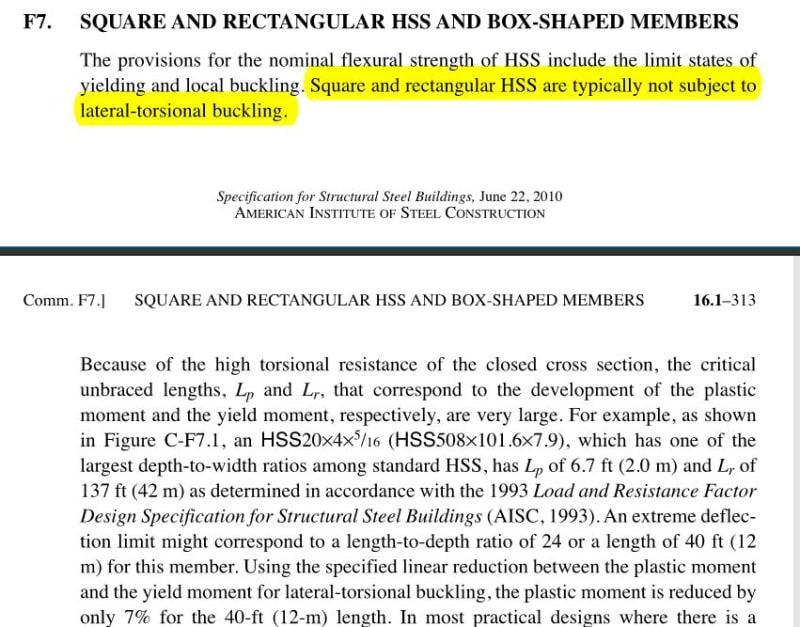LittleInch
Petroleum
- Mar 27, 2013
- 22,392
There was a recent post here which disappeared as the poster was asking for a design, but I was intrigued enough to do some research into this.
So on a theoretical level, if a wooden beam ( the example was about 4.5m of 4 x 12, so basically half a tree) is accepted by various parties as being sufficiently strong to resist loads and deflection limits, how do you show that a substitute square steel tubing 2 x 10 is as good?
Looking at deflection calcs the term EI as a denominator is always there.
So ignoring anything else, is it simply a matter of showing that if the EI of the steel tube is bigger than the EI of the wooden beam then it is at least as good?
I did some quick calcs and using an E of 10 GPa for wood and 200 GPa for steel plus the I calculation, the steel bean was about twice as good in terms of deflection calcs and I would assume similar for bending moment / shear etc. Of course it is harder to nail other bits of wood into the steel beam, but you take the rough with the smooth.
Does that work as simple ready reckoner? This doesn't mean you can design anything and still need sign off etc but does it work?
Remember - More details = better answers
Also: If you get a response it's polite to respond to it.
So on a theoretical level, if a wooden beam ( the example was about 4.5m of 4 x 12, so basically half a tree) is accepted by various parties as being sufficiently strong to resist loads and deflection limits, how do you show that a substitute square steel tubing 2 x 10 is as good?
Looking at deflection calcs the term EI as a denominator is always there.
So ignoring anything else, is it simply a matter of showing that if the EI of the steel tube is bigger than the EI of the wooden beam then it is at least as good?
I did some quick calcs and using an E of 10 GPa for wood and 200 GPa for steel plus the I calculation, the steel bean was about twice as good in terms of deflection calcs and I would assume similar for bending moment / shear etc. Of course it is harder to nail other bits of wood into the steel beam, but you take the rough with the smooth.
Does that work as simple ready reckoner? This doesn't mean you can design anything and still need sign off etc but does it work?
Remember - More details = better answers
Also: If you get a response it's polite to respond to it.

